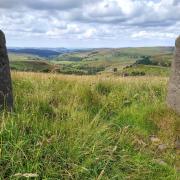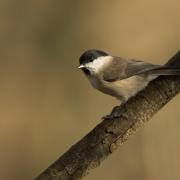The National Trust is celebrating a record tree-planting season which has seen 60,000 new trees planted in the High Peak, an increase of over 20,000 compared to the past three seasons, bringing the total to more than 310,000 in ten years.
The previous highest number of trees planted in the High Peak during a season is 40,839, whereas the average over the previous three years has been 38,351.
Over the winter, native species of trees including sessile oak, silver birch, rowan, hawthorn, downey birch, alder and bird cherry have been planted by the National Trust in the sheltered valleys and cloughs that lead onto the High Peak moors.
The conservation charity’s work in the High Peak supports a project to reintroduce woodland and scattered trees and shrubs where they would have once been.
The trees will keep the valley sides stable at the same time as providing shelter and food for wildlife.

The tree planting has taken place thanks to funding from Severn Trent, the Forestry Commission, Natural England and donations from supporters.
It is all part of a dedicated National Trust programme to protect and develop healthy woodlands and ensure trees and shrubs in the landscape are creating habitats for wildlife, increasing biodiversity and combating the effects of climate change.
‘It is well known that trees are important to help us tackle the climate and nature crisis,’ says Craig Best, general manager for National Trust in the Peak District.
‘They store carbon, stabilise soil and are home to a huge variety of wildlife which our ecosystems rely on. The work we are doing in the Peak District to make sure the right tree is in the right place will safeguard this beautiful place for the future and have a range of benefits for people and nature.
‘Rangers, volunteers, farm tenants, partners and contractors have all helped to plant this huge number of trees and reach this milestone. I know we can achieve a great deal more together as our work continues in the future.’
Across the whole of the Peak District, the National Trust’s work includes large scale woodland creation projects, alongside others designed to manage the health and diversity of woodland that already exists in the Peak District National Park.
The conservation charity has also carried out smaller scale projects in a bid to reintroduce scattered trees into the landscape and connect woodland habitats.
Elsewhere in the Peak District, staff and volunteers from the National Trust are busy planting trees and managing woodland in a variety of ways.
Over in the White Peak, the team are working hard to tackle the devastating effects of ash dieback. Following the necessary removal of diseased trees, they are planting a mix of native species to take their place in order to create healthy woodlands for the future.
Rangers and volunteers are following up the removal of diseased ash trees in the steep sided banks and ravines of the White Peak by planting a mix of native woodland tree species. This includes trees that will form a canopy such as oak, birch and field maple, along with large-leaved and small-leaf lime.
They have also planted species which prefer low light under the canopy and don’t grow as tall, but are a vital part of a healthy woodland, such as hazel, dog wood and guelder rose, along with a few yew trees.
READ MORE: Things to see and do in the High Peak in Derbyshire
On the moors and woodlands that the National Trust cares for on the edge of Sheffield, across Longshaw, Burbage and the Eastern Moors, trees are being planted in certain identified places to help improve biodiversity as part of conservation work taking place there.
Work also continues on a long-term woodland pasture restoration project. This involves thinning non-native species to provide more space for native species and create better habitats for insects and birds. It will also help the trees be better equipped to deal with climate change.
The National Trust has pledged to plant 20 million trees by 2030 across the UK as part of an intense and important ongoing initiative to drastically reduce carbon emissions.
As part of this essential work, trees are the best natural solution to lock up existing atmospheric carbon and reaching this ambitious target will benefit both people and nature.
As the UK’s single biggest private landowner, the National Trust is in a strong position – both here in Derbyshire and across the UK – to help this drive to reduce the effects of climate change.
By planting and establishing more trees, more carbon will be captured from the atmosphere as they grow.
Incredibly, one single tree could remove one tonne of carbon dioxide from the air over its lifetime.
The carbon is not only stored by the tree and the roots but also held in the surrounding soil. As trees grow, they absorb and lock in carbon emissions that would otherwise contribute to global heating.
Find out more about the conservation charity’s ongoing work in the Peak District



























